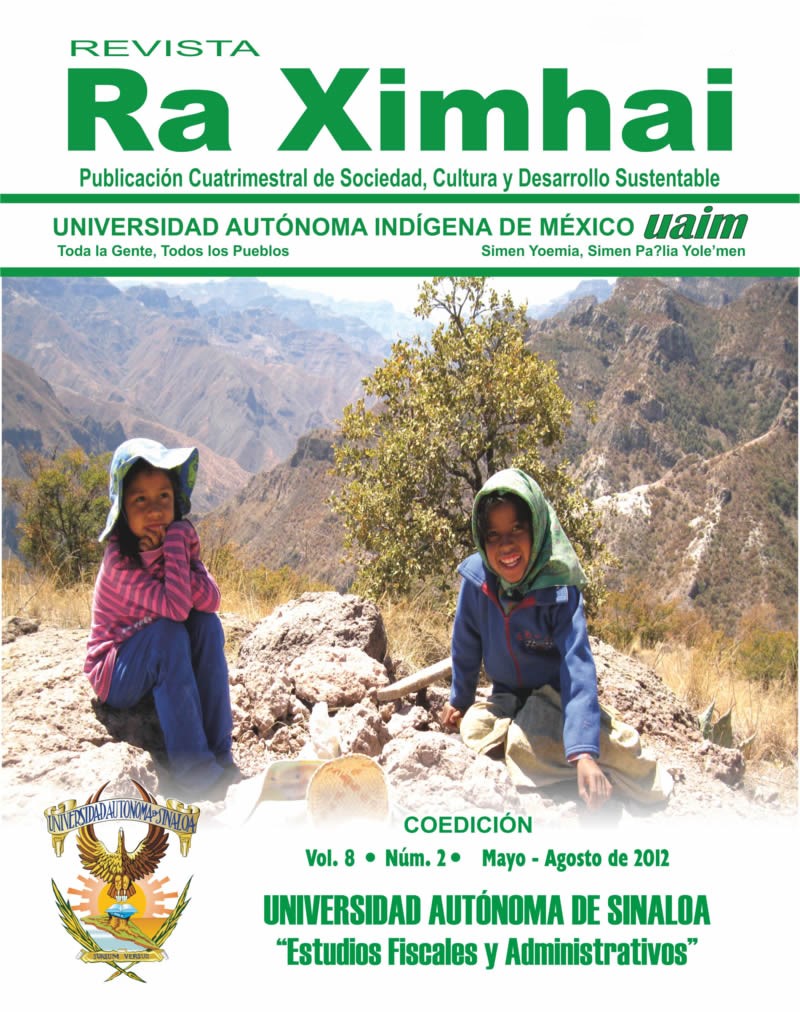Conservation programs for works in irrigation districts as a sustainable alternative in the management of water for agricultural use
DOI:
https://doi.org/10.35197/rx.08.02.2012.12.vpKeywords:
irrigation modules, hydric shortage, hydric policies, sheets of waterAbstract
Water scarcity is a topic of global interest since it is already having an impact on social development. Mexico is not immune to this problem, and in several regions of the country there are great difficulties in supplying water, mainly for agricultural use. In Sinaloa, it has been repeatedly mentioned in the media that in the irrigation district 063, located in the north of the state, there are problems of water scarcity, and even so there are difficulties in conserving the resource, since more than 49% of the water used for agriculture is wasted.
To solve this problem, producers and government institutions allocate significant resources for investment in water conservation, however, the results have not been entirely satisfactory since waste is high, a situation that motivates a thorough study of the main weaknesses that affect the sustainable use of the resource. The participation of the user-farmer in the management of the hydraulic infrastructure is important, since in addition to providing economic resources for the conservation of the hydraulic network, he/she participates in the construction and repair of hydraulic infrastructure, in the planning and design of strategies for water conservation. This situation requires an appropriate technological and intellectual level, something that local producers lack and therefore complicates the sustainable management of the resource.
Downloads
References
Biswas, A. 1999. “Water Crisis: Current Perceptions and Futures Realities, en Salman ed. Groundwater: Legal and Policy Perspectivas”. World Bank Technical Paper (456). Pp.1-29.
Cárdenas, Gustavo, Cárdenas J. 2009. “Agricultura, urbanización y agua”. Instituto Interamericano de Cooperación para la Agricultura (IICA). San José, C.R. ISBN13:
-92-9248-111-7, Montevideo, Uruguay. Pp. 1 - 44.
CONAGUA. 2007a. Plan de riegos Distrito 063 Guasave 2007-2008. Dirección de infraestructura hidroagrícola del Organismo de Cuenca Pacifico Norte Región III. Culiacán, México.
CONAGUA. 2007b.Programadeactividades ciclo agrícola 2007-2008 para la conservación de obras de distritos de riegos transferidos. Distrito de riego 063. Subdirección general de infraestructura hidroagrícola del Organismo de Cuenca Pacifico Norte Región III. Culiacán, México.
CONAGUA. 2008a. Plan de riegos Distrito 063 Guasave 2008-2009. Dirección de infraestructura hidroagrícola del Organismo de Cuenca Pacifico Norte Región III. Culiacán, México.
CONAGUA. 2008b. Programa de actividades ciclo agrícola 2008- 2009 para la conservación de obras de distritos de riegos transferidos. Distrito de riego 063. Subdirección general de operación del Organismo de Cuenca Pacifico Norte Región III. Culiacán, México.
CONAGUA. 2009a. Plan de riegos Distrito 063 Guasave 2009-2010. Dirección de infraestructura hidroagrícola del Organismo de Cuenca Pacifico Norte Región III. Culiacán, México.
CONAGUA. 2009b. Programa de actividades ciclo agrícola 2009- 2010 para la conservación de obras de distritos de riegos transferidos. Distrito de riego 063. Subdirección general de operación del Organismo de Cuenca Pacifico Norte Región III. Culiacán, México.
CONAGUA. 2009c. Organismo de cuenca del pacífico norte. Portal del CONAGUA Recuperado el día 26 de mayo de 2010 en:
http://www.conagua.gob.mx/OCPn/ E spa ni ol/ T m pCont e ni do.
aspx?id=c813f07c-448c-40f1-987e- 1da36b9d14cd%7CCon%C3%B3c enos%7C1%7C0%7C0%7C0%7C0
CONAGUA. 2010a. Plan de riegos Distrito 063 Guasave 2010-2011. Dirección de infraestructura hidroagrícola del Organismo de Cuenca Pacifico Norte Región III. Culiacán, México.
CONAGUA. 2010b. Estadísticas del Agua en México, edición 2010. Secretaría de Medio Ambiente y Recursos Naturales. México, D.F.
De la Lanza E. G. y García C. J. L. 2002. Lagos y presas de México. Editorial AGT S.A. 2da. Edición
González-Márquez L.C. y Hansen A.M. 2009. Adsorción y mineralización de atrazina y relación con parámetros de suelos del DR 063 Guasave, Sinaloa. Rev. Mex. Cienc. Geol. 26, 587-599.
Instituto Nacional de Estadística y Geografía INEGI. 2011. Mapa de agricultura y vegetación. Sinaloa. Recuperado el día 25 de julio de 2011 en: http://mapserver.inegi.org. mx/geografia/espanol/estados/sin/ agri.cfm?c=444&e=04
Klohn, Wulf y Appelgren Bo. 1999. “Agua y agricultura”. Revista CIDOB d’AFERS Internacionals. Núm 45- 46. Pp. 105 – 126.
PND. 2007. Plan Nacional de Desarrollo 2007 – 2012, Poder Ejecutivo
Federal, 2007, México.
PNH. 2008. Programa Nacional Hídrico 2007 – 2012, Comisión Nacional del
Agua, 2008, México.
Sánchez, Astello M., Arteaga Tovar, Reyes Ramírez, Arana Muñoz. 2001. Diagnostico del Módulo de Riego número 7 de la Venta-Unión Hidalgo, Oaxaca, México. Agricultura Técnica en México, enero-junio, año/vol. 27, núm. 001, Texcoco,
México, pp. 35-45
Downloads
Published
How to Cite
Issue
Section
License
Copyright (c) 2012 Víctor Manuel Peinado Guevara, Carmen Camacho Castro, Deyanira Bernal Domínguez, Omar Delgado Rodríguez, Héctor José Peinado Guevara

This work is licensed under a Creative Commons Attribution-NonCommercial 4.0 International License.
Usted es libre de:
- Compartir — copiar y redistribuir el material en cualquier medio o formato
- Adaptar — remezclar, transformar y construir a partir del material
- La licenciante no puede revocar estas libertades en tanto usted siga los términos de la licencia
Bajo los siguientes términos:
- Atribución — Usted debe dar crédito de manera adecuada , brindar un enlace a la licencia, e indicar si se han realizado cambios . Puede hacerlo en cualquier forma razonable, pero no de forma tal que sugiera que usted o su uso tienen el apoyo de la licenciante.
- NoComercial — Usted no puede hacer uso del material con propósitos comerciales .
- No hay restricciones adicionales — No puede aplicar términos legales ni medidas tecnológicas que restrinjan legalmente a otras a hacer cualquier uso permitido por la licencia.








